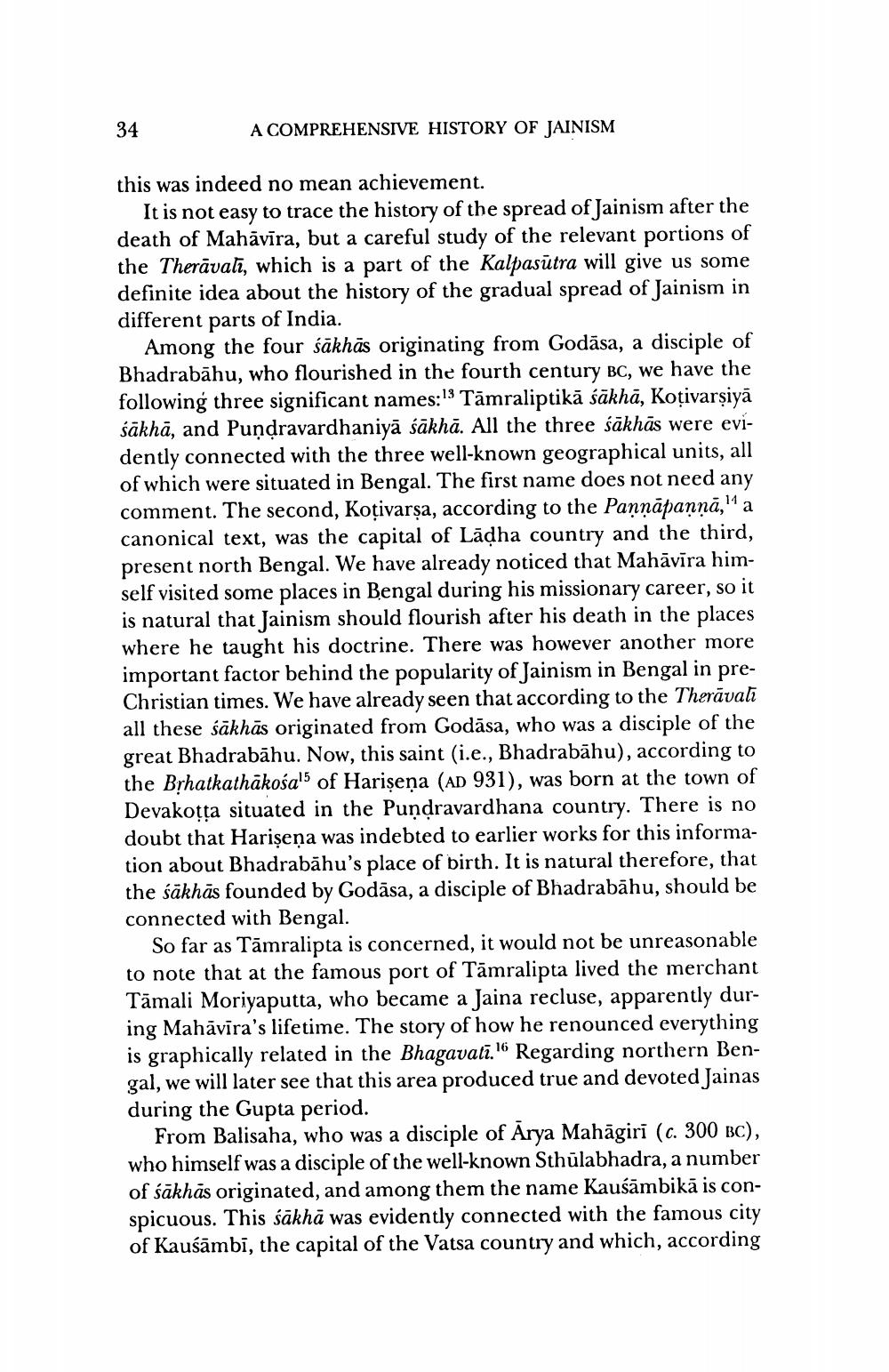________________
34
A COMPREHENSIVE HISTORY OF JAINISM
this was indeed no mean achievement.
It is not easy to trace the history of the spread of Jainism after the death of Mahāvīra, but a careful study of the relevant portions of the Therāvalī, which is a part of the Kalpasūtra will give us some definite idea about the history of the gradual spread of Jainism in different parts of India.
Among the four sākhās originating from Godāsa, a disciple of Bhadrabāhu, who flourished in the fourth century BC, we have the following three significant names:13 Tāmraliptikā sākhā, Koțivarșiyā sākhā, and Pundravardhaniyā sākhā. All the three śākhās were evidently connected with the three well-known geographical units, all of which were situated in Bengal. The first name does not need any comment. The second, Koțivarsa, according to the Pannāpaņņā," a canonical text, was the capital of Lādha country and the third, present north Bengal. We have already noticed that Mahāvīra himself visited some places in Bengal during his missionary career, so it is natural that Jainism should flourish after his death in the places where he taught his doctrine. There was however another more important factor behind the popularity of Jainism in Bengal in preChristian times. We have already seen that according to the Therāvali all these sākhās originated from Godāsa, who was a disciple of the great Bhadrabāhu. Now, this saint (i.e., Bhadrabāhu), according to the Brhatkathākośa's of Harisena (AD 931), was born at the town of Devakotta situated in the Pundravardhana country. There is no doubt that Harişeņa was indebted to earlier works for this information about Bhadrabāhu's place of birth. It is natural therefore, that the sākhās founded by Godāsa, a disciple of Bhadrabāhu, should be connected with Bengal.
So far as Tāmralipta is concerned, it would not be unreasonable to note that at the famous port of Tamralipta lived the merchant Tāmali Moriyaputta, who became a Jaina recluse, apparently during Mahāvīra's lifetime. The story of how he renounced everything is graphically related in the Bhagavatī. 16 Regarding northern Bengal, we will later see that this area produced true and devoted Jainas during the Gupta period.
From Balisaha, who was a disciple of Arya Mahāgiri (c. 300 BC), who himself was a disciple of the well-known Sthūlabhadra, a number of śākhās originated, and among them the name Kaušāmbikā is conspicuous. This sākhā was evidently connected with the famous city of Kaušāmbi, the capital of the Vatsa country and which, according




